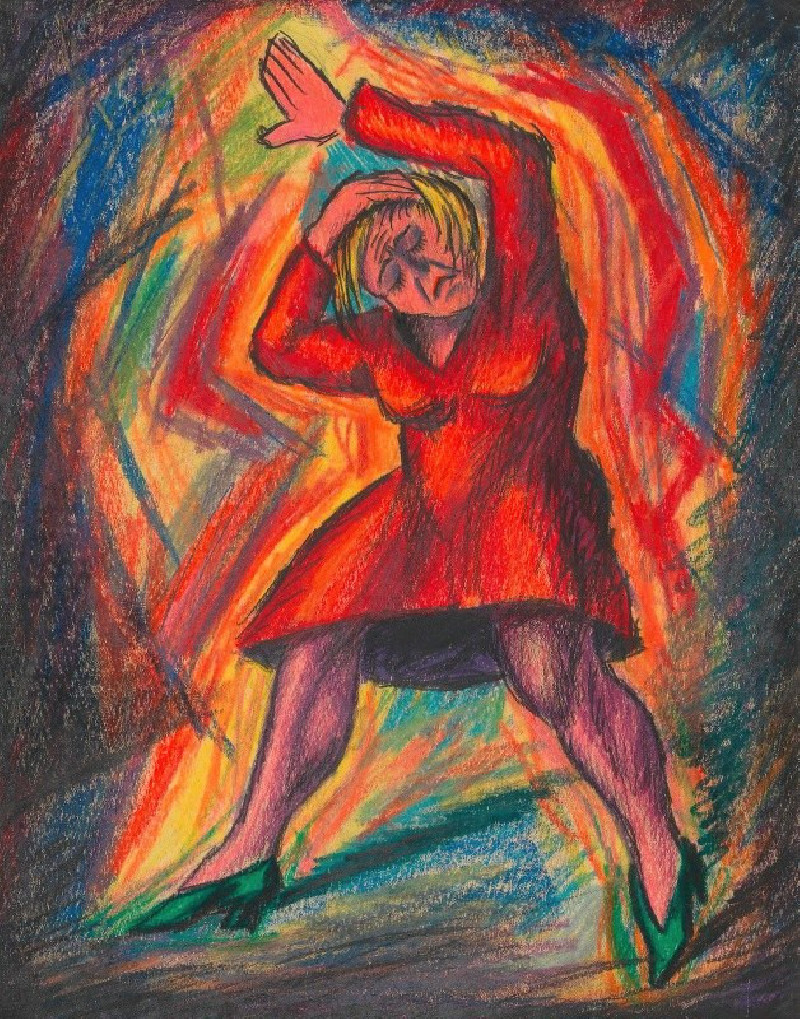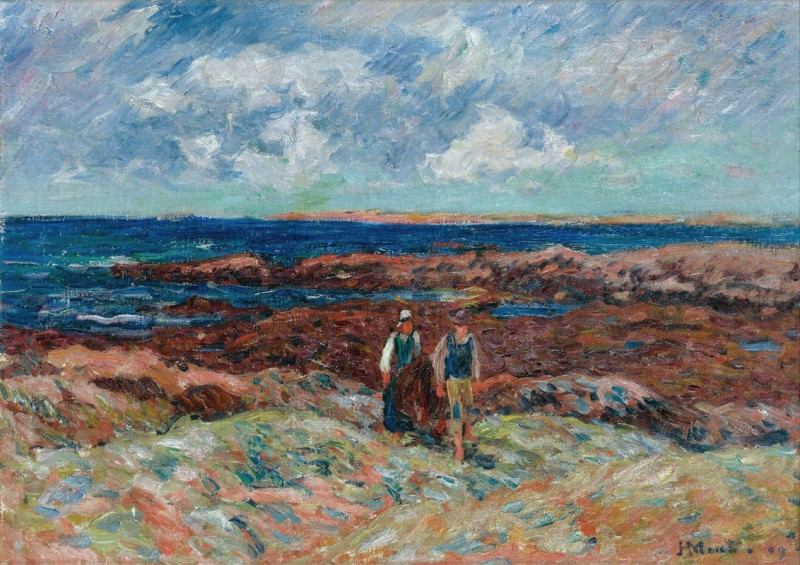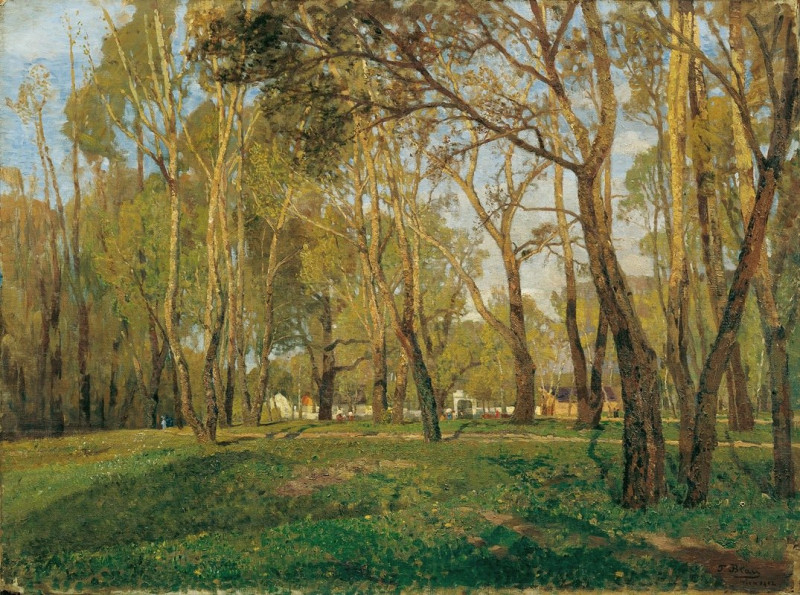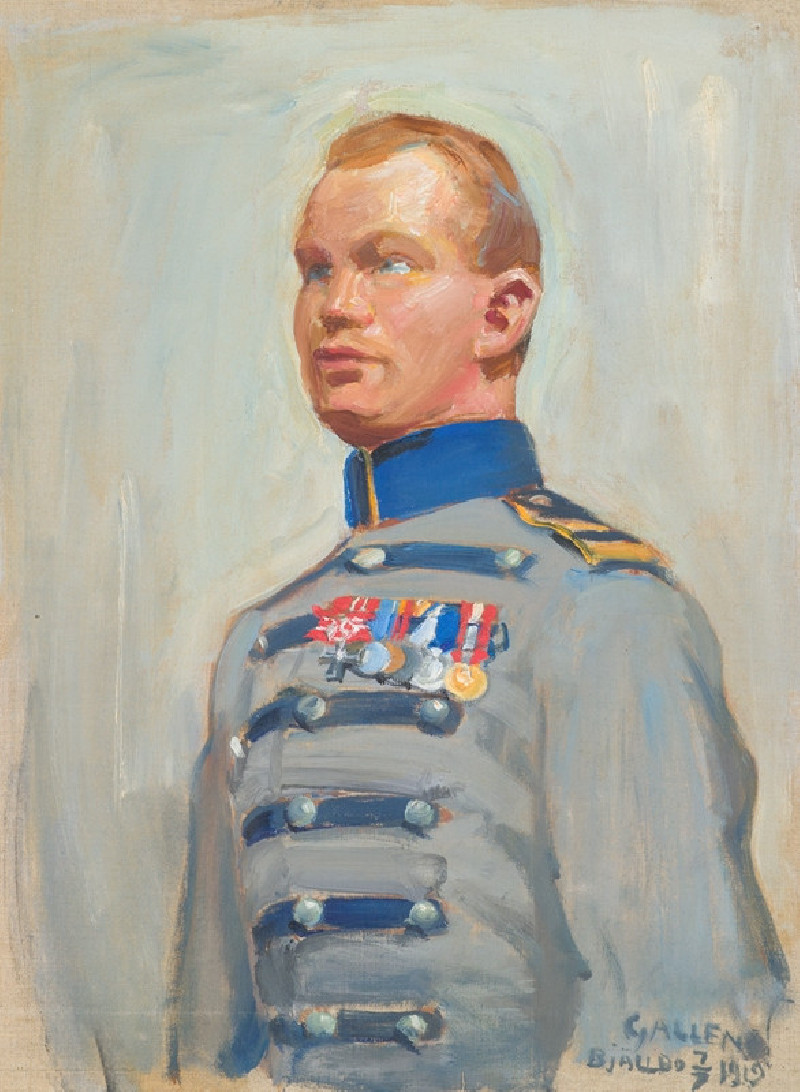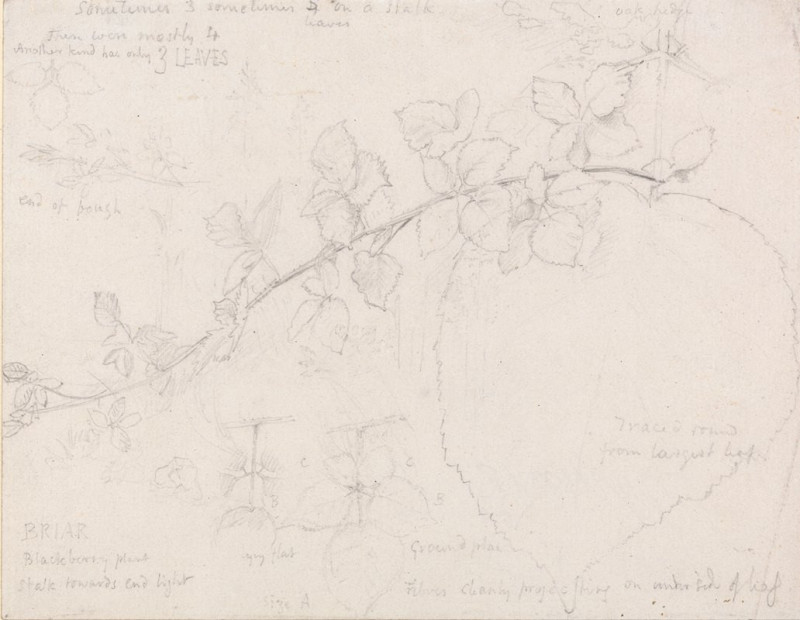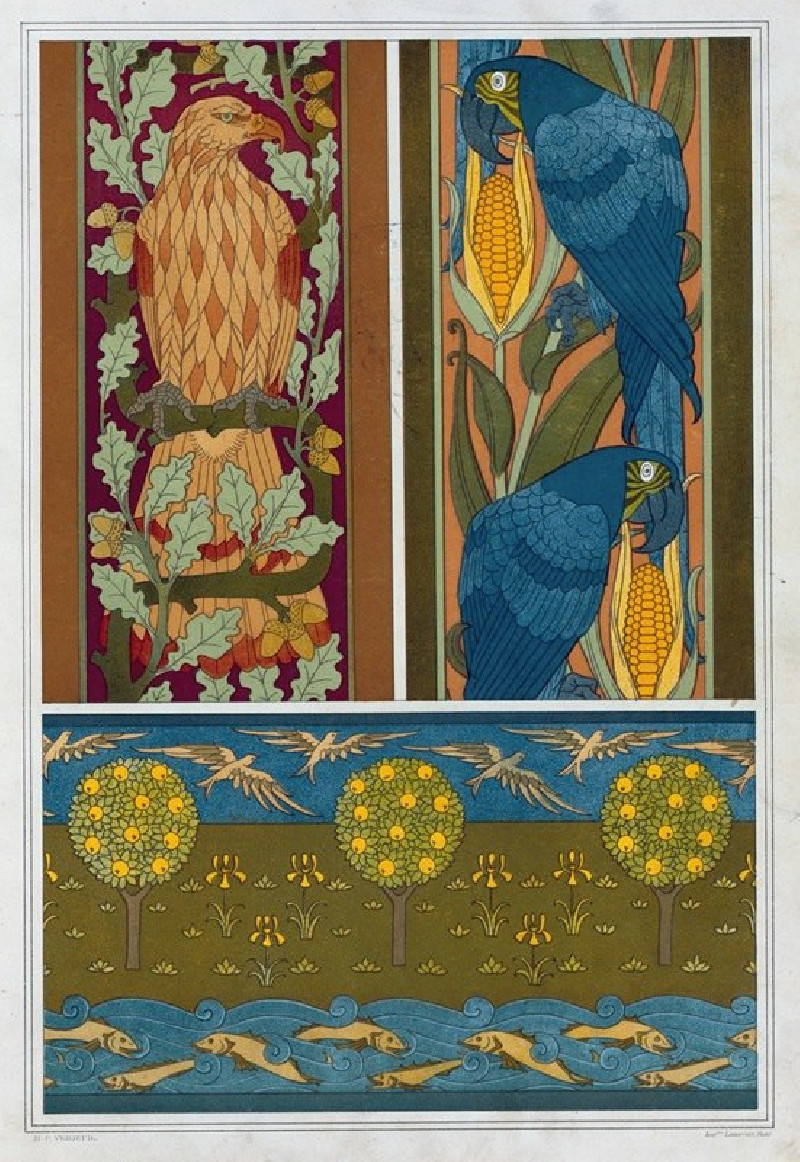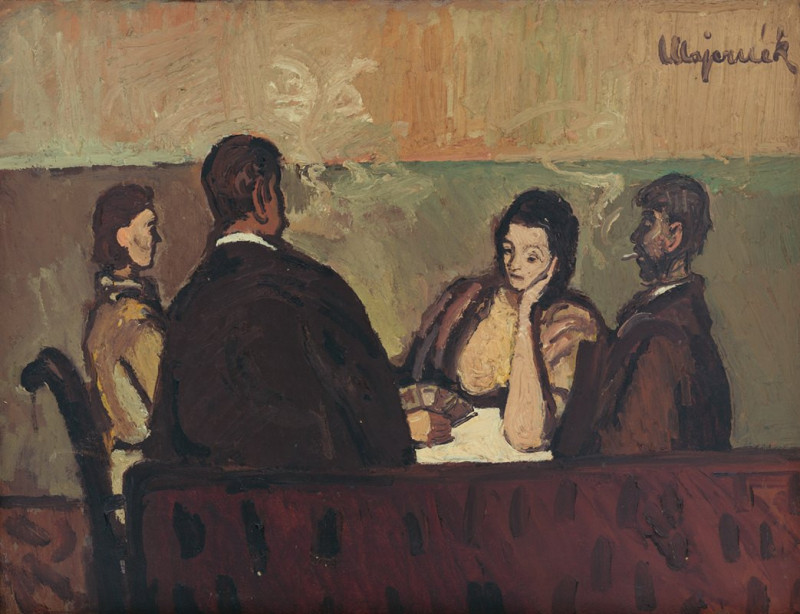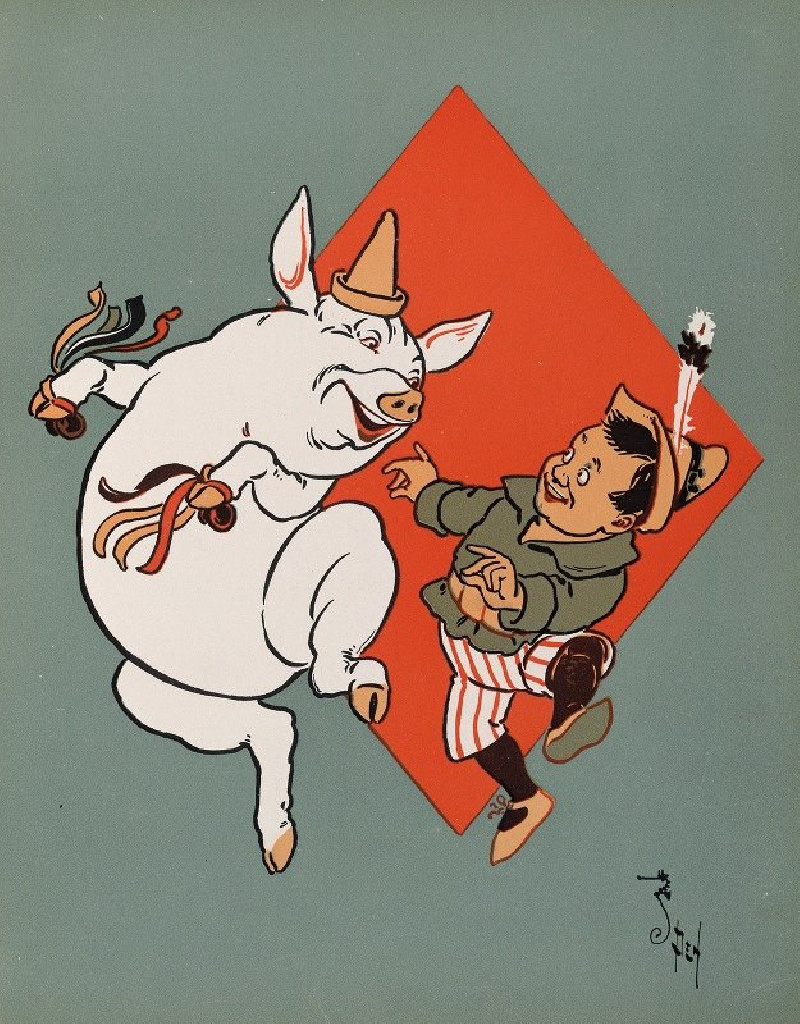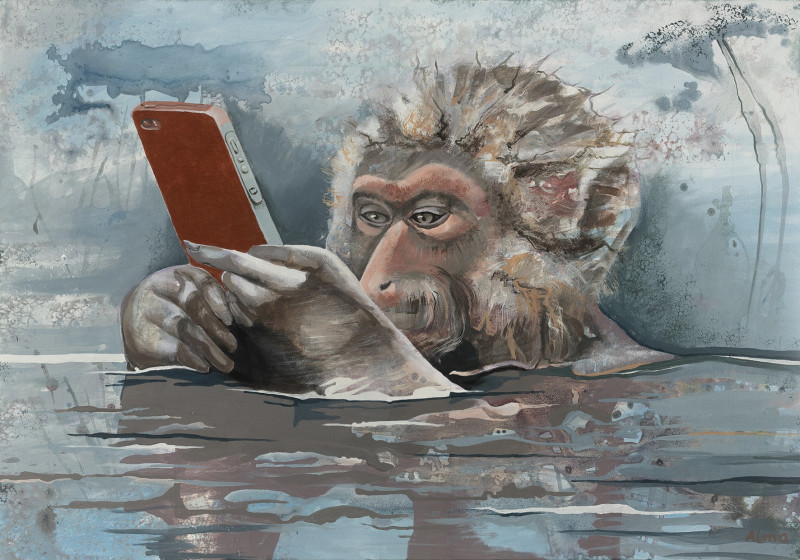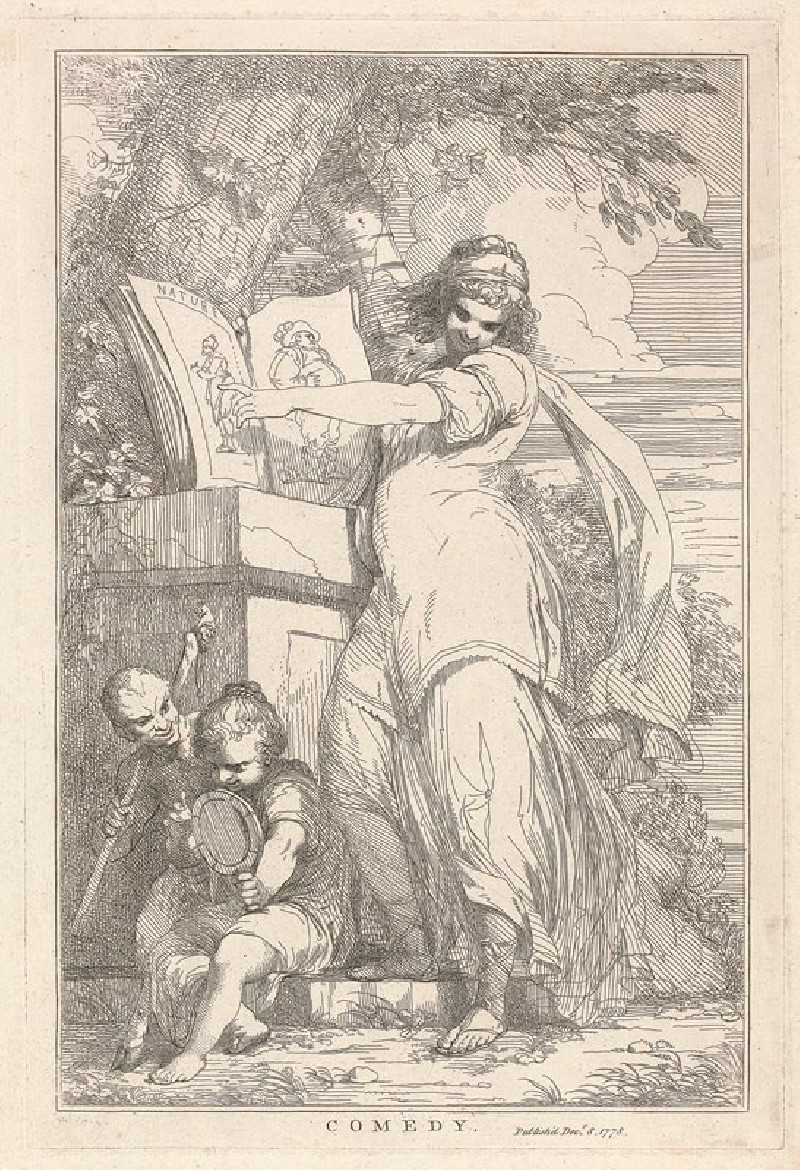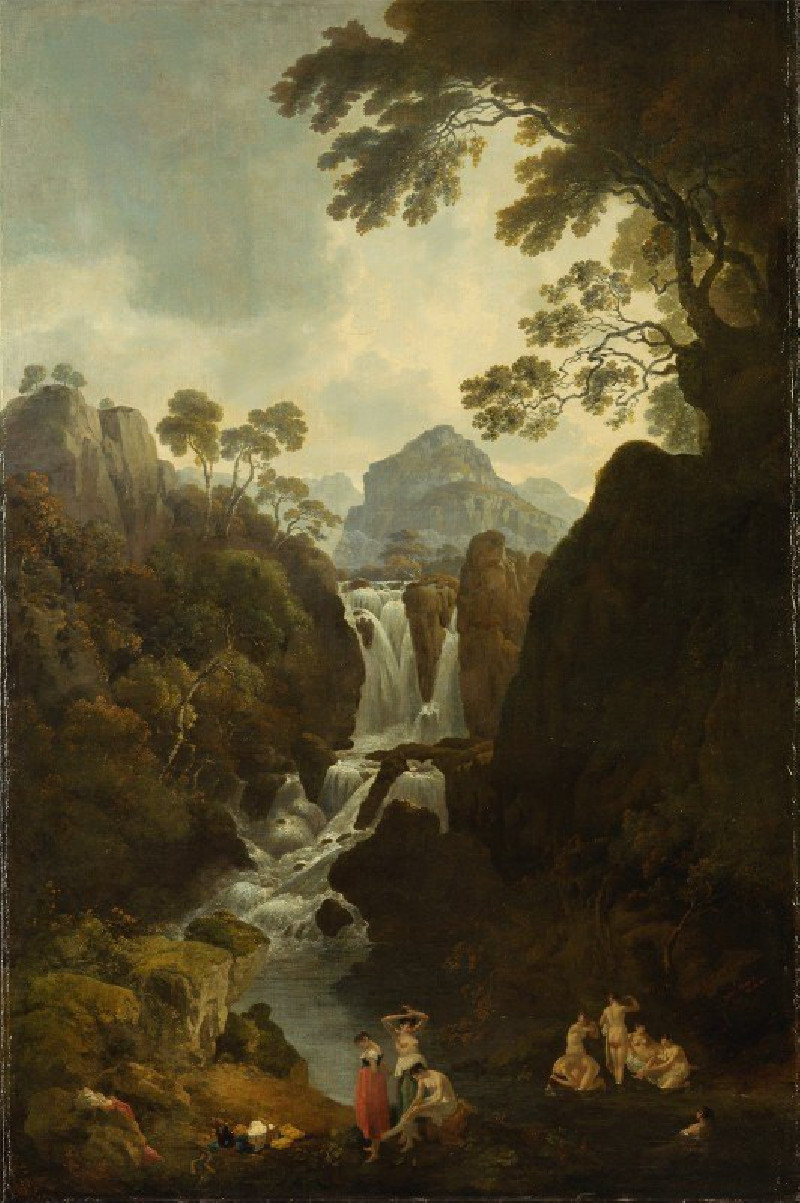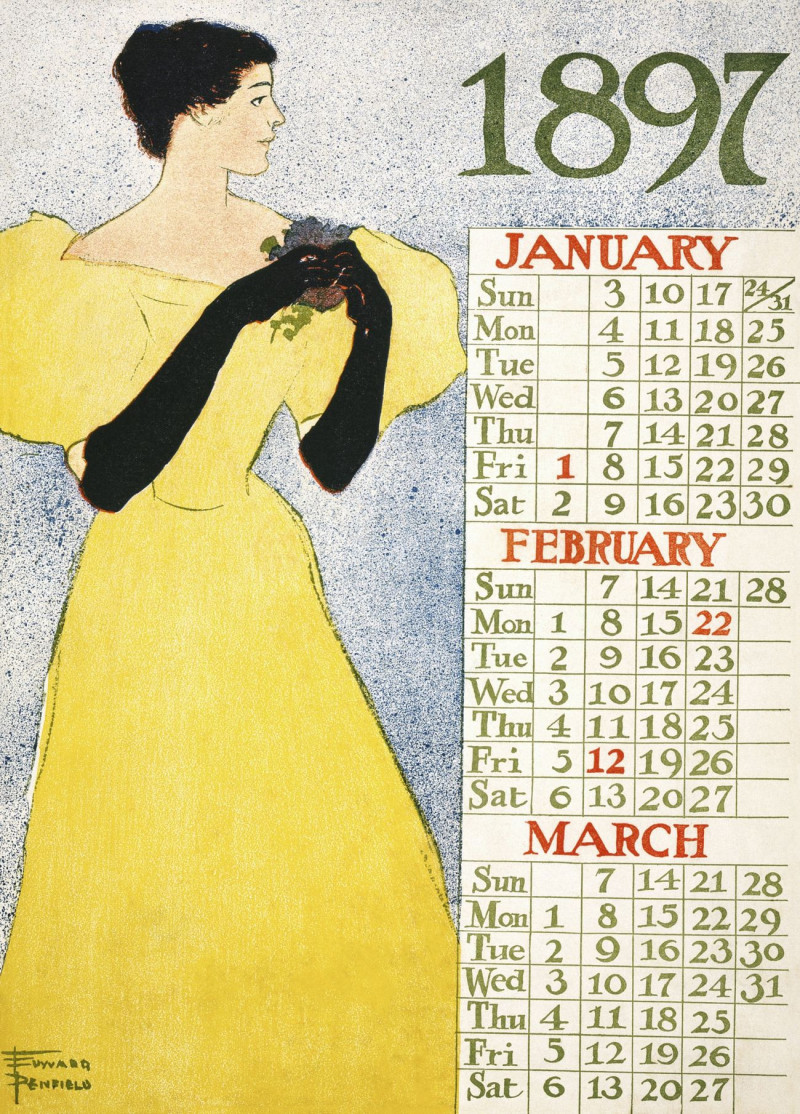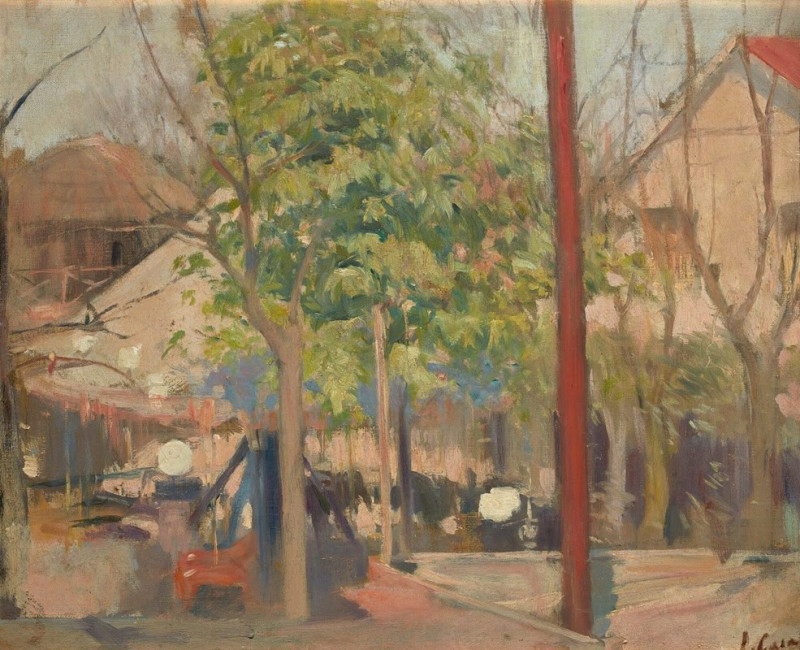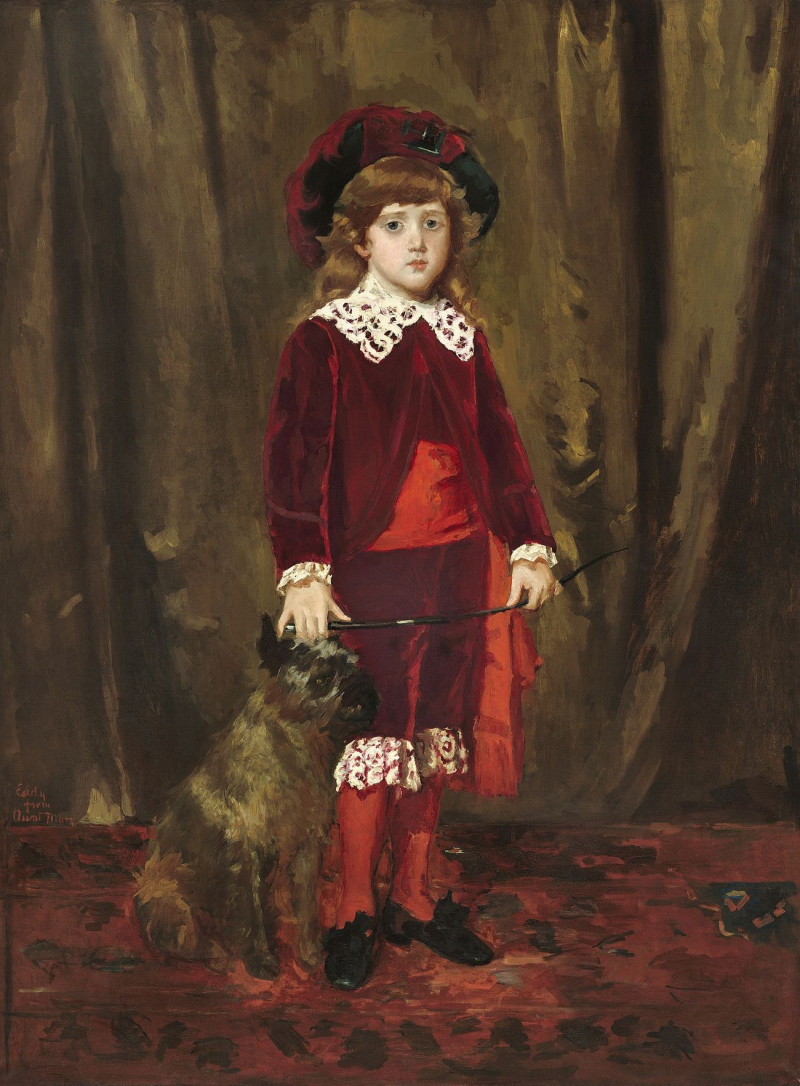Verzweiflung (around 1928)
Technique: Giclée quality print
Recommended by our customers
More about this artwork
“Verzweiflung” (Despair), painted by Karl Wiener around 1928, is a compelling expressionistic piece characterized by its vivid emotional intensity and striking use of color. The painting portrays a figure cloaked in a blazing red garment, their form twisted in an encompassing swirl of vibrant hues. The person appears to be enveloped by or emerging from the dynamic, almost tumultuous strokes of reds, yellows, and blues that create a sense of movement around the central figure.The posture of the figure, with one arm thrown up and the head turned away, conveys a powerful expression of despair and turmoil. This emotional portrayal is heightened by the dramatic, almost aggressive application of color, suggesting a storm of internal and external chaos. The dark contours and sharp lines emphasize the intense emotional state of the subject.Wiener’s work is an example of how color and form can be used to express deep psychological states, making “Verzweiflung” not just a visual experience but an emotional journey for the viewer.
Delivery
Reproductions are made to order and take 5 to 7 working days.
We send them out by courier and delivery takes another two working days.
If you need a reproduction sooner, please contact us - we can usually find a solution and produce it a little faster.
If you don't want to pay for postage, you can pick up your paintings at our galleries in Kaunas or Vilnius.
Returns
Yes, reproductions can be returned.
If you have any doubts more than 30 days after the date of purchase, please contact us - we will take the reproduction back for a refund or offer you a replacement!
We accept a maximum of two returns per customer - please note that we make reproductions to order, so please choose responsibly.
We do not refund shipping expenses.

